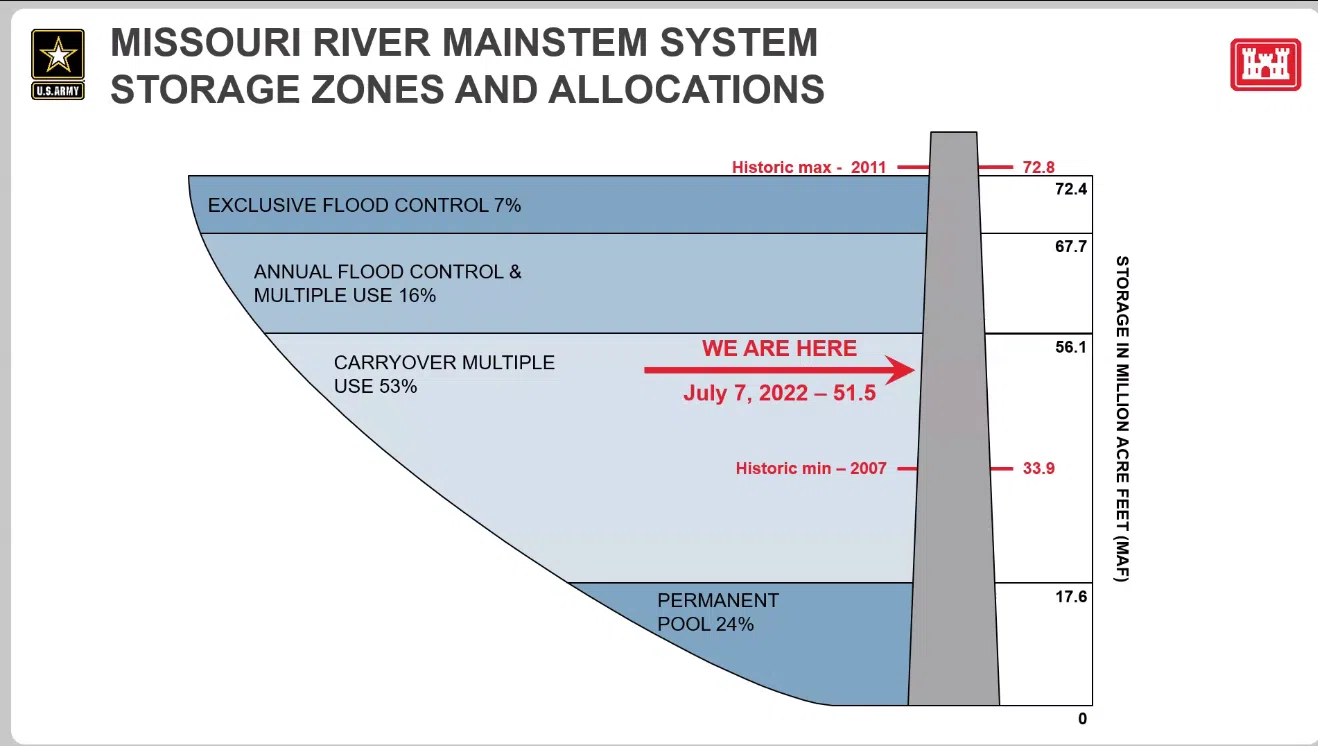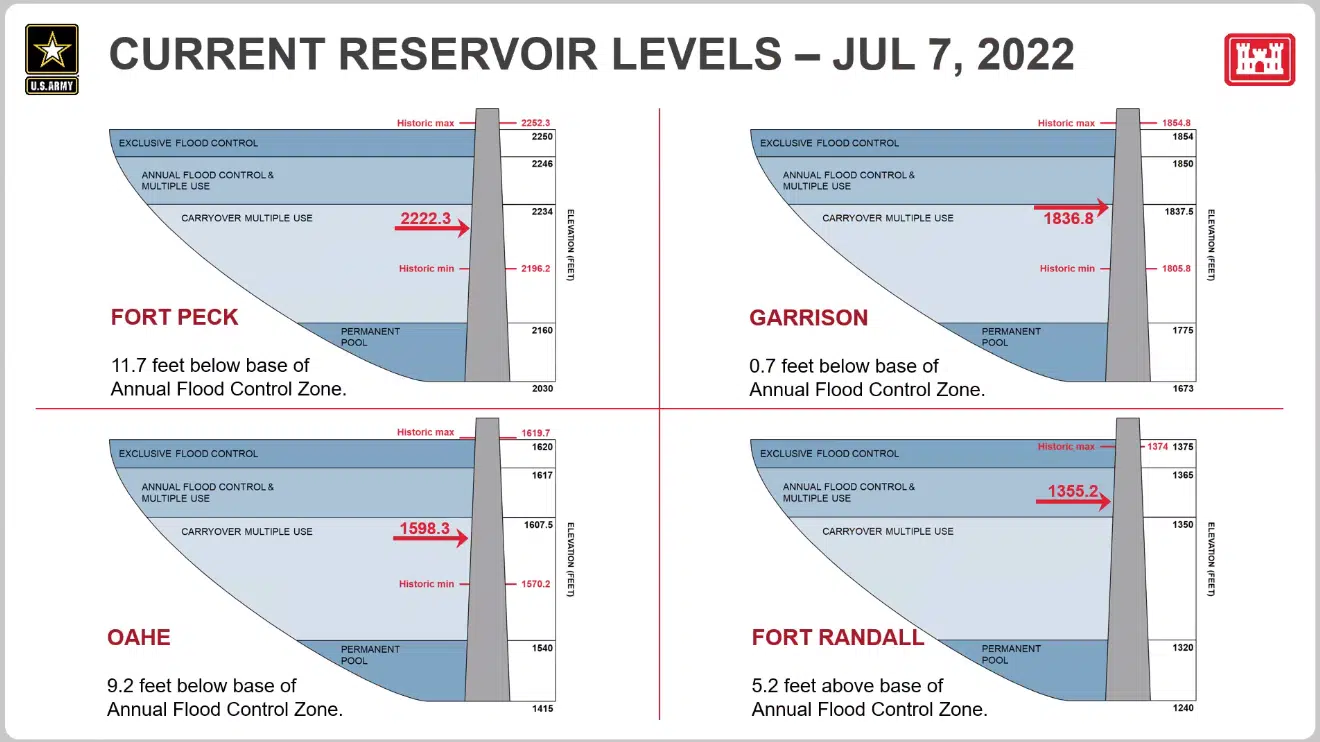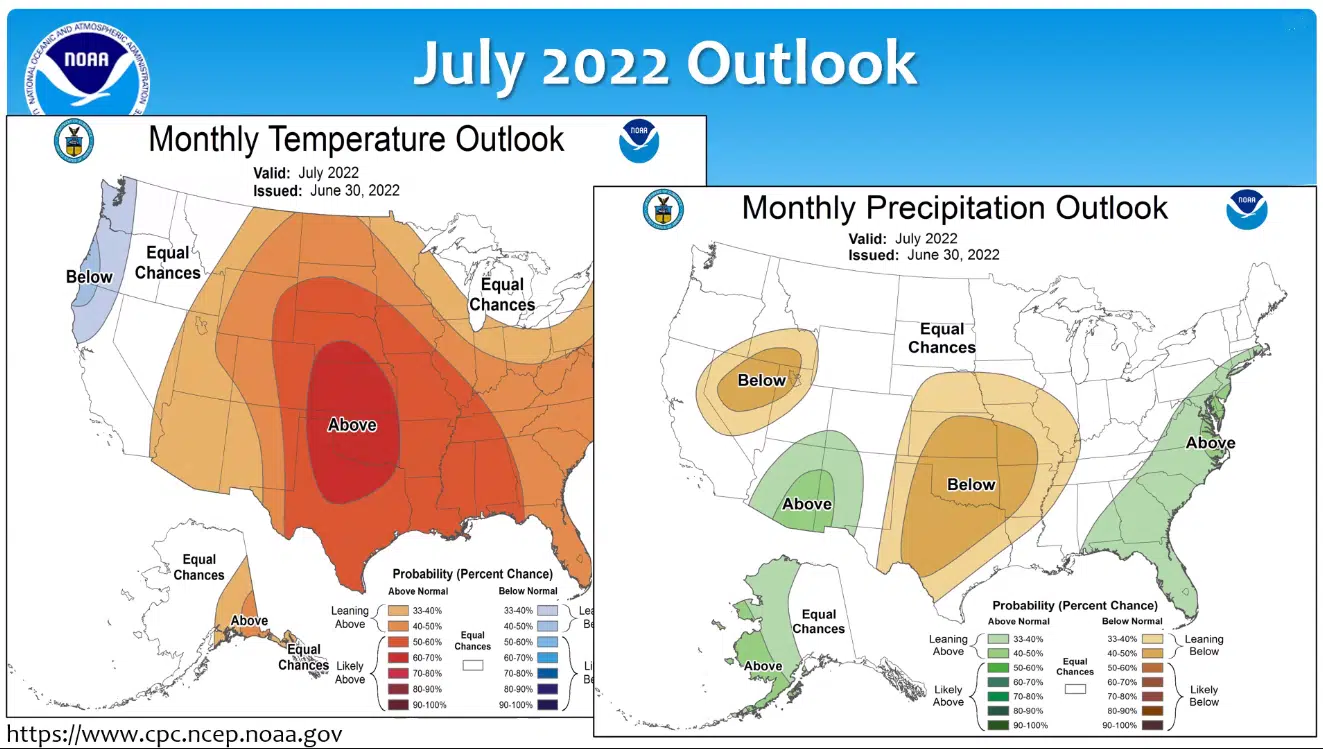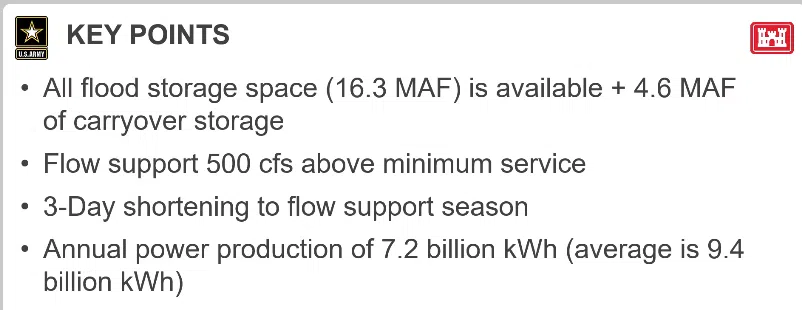JULY 11, 2022:
The US Army Corps of Engineers says June runoff in the upper Missouri River basin was 94% of average (5.2 million acre-feet).
National Weather Service Hydrologist Kevin Low says that’s despite the major flooding on the Yellowstone River.
Low says a few different weather events combined to create the massive flooding at Yellowstone.
The floodwater from the Yellowstone River will eventually make its way down the Missouri River. But, chief of the Corps’ Missouri River Basin Water Management Division John Remus says the Fort Peck, Garrison and Oahe Dams are being used to manage the flow.
Remus says due to the ongoing drought in parts of the upper Basin and the amount of water stored in the reservoir system, water conservation measures will likely continue through the remainder of 2022 and into 2023.
The Missouri Basin Web App, http://go.usa.gov/xE6fC, provides links to these reports that are updated more frequently.
JULY 8, 2022:
Despite improved runoff in June, water conservation measures will continue for the second half of the navigation flow support season based on the July 1, 2022, Missouri River Mainstem Reservoir System storage.
June runoff in the Missouri River basin above Sioux City, Iowa was 5.2 million acre-feet, 94% of average. The updated 2022 runoff forecast is 20.0 MAF, 78% of average and 1.7 MAF higher than last month’s annual runoff forecast.
“Heavy rain in mid-June on the upper Yellowstone River, coincided with mountain snowmelt increasing inflows into Garrison reservoir,” said John Remus, chief of the U.S. Army Corps of Engineers’ Missouri River Basin Water Management Division.
The only other reach above average was Gavins Point to Sioux City, which was 136% of average.
“While soil moisture has improved in some areas over the last month, drought conditions persist across much of the Missouri River basin, and mainstem reservoir levels remain below normal,” said Remus.
“Based on the July 1 System storage the navigation flow support service level will be increased slightly, and, per the guidelines in the Master Manual, the navigation flow support season will be 3 days shorter.”
Due to the ongoing drought and the amount of water stored in the reservoir system, water conservation measures will likely continue through the remainder of 2022 and into 2023. The monthly study indicates that the winter release rate from Gavins Point, which is based on the September 1 storage check, will likely be at a minimum rate of 12,000 cfs.
Big Bend Dam releases:
- Average releases past month – 16,300 cfs
- Forecast average release rate – 23,700 cfs
- Forecast reservoir level – 1421.0 feet
Oahe Dam releases:
- Average releases past month – 15,500 cfs
- Forecast average release rate – 24,700 cfs
- End-of-June reservoir level – 1598.2 feet (up 1.5 feet from May 31)
- Forecast end-of-July reservoir level – 1597.5 feet


Infographic credit US Army Corps of Engineers.









Comments